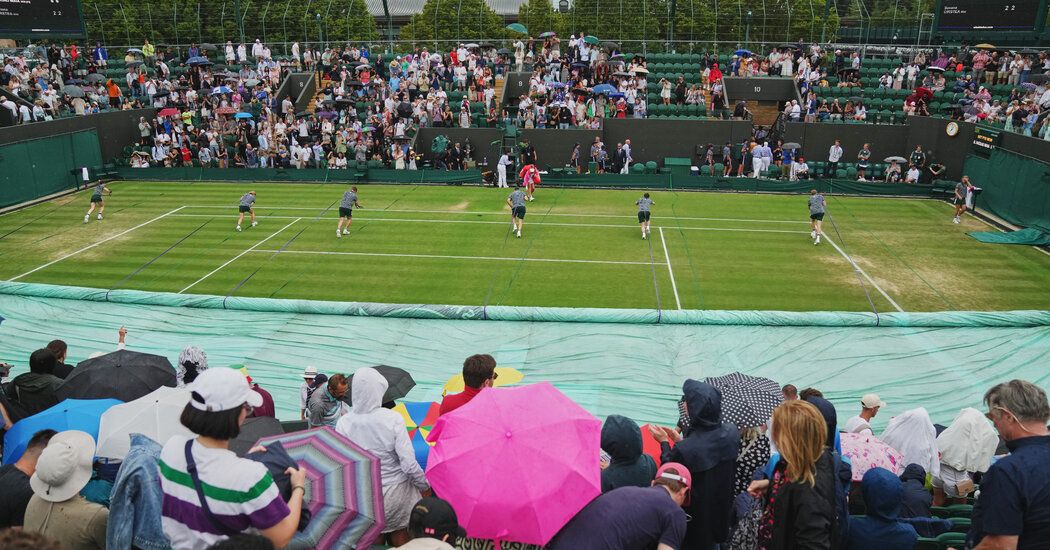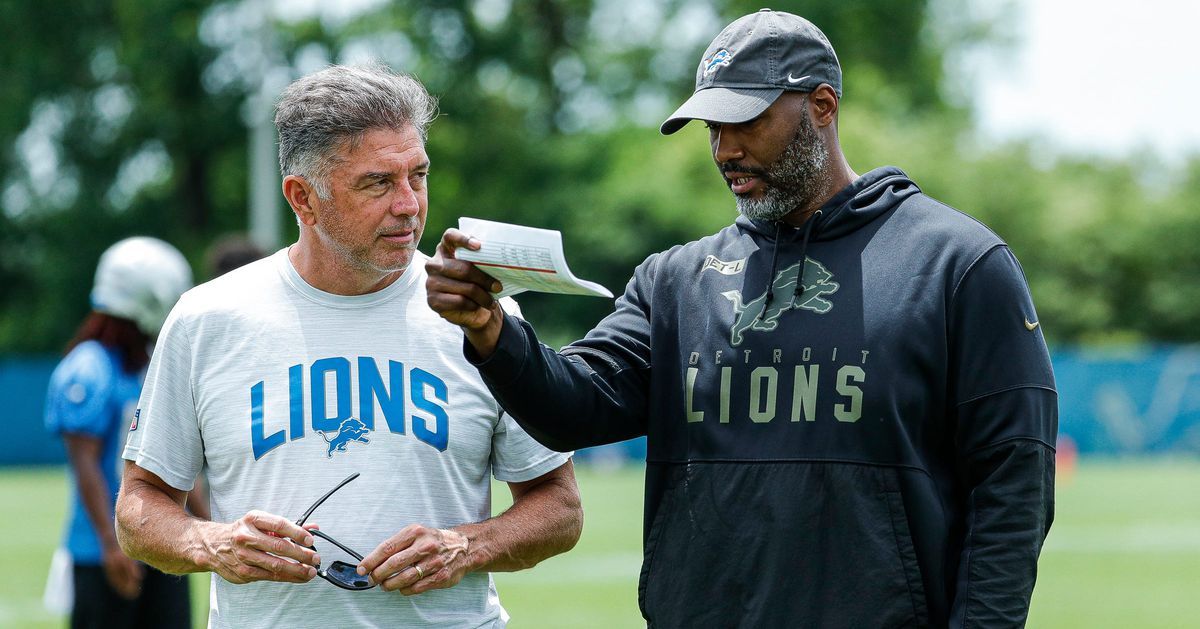How Do Wimbledon’s Grass Courts Keep Dry In All The Rain?
High atop the outer south wall of Centre Court at Wimbledon, a small rectangle has been cut away in the lush, green ivy, revealing a digital number that few, if any, of the 42,000 spectators entering the grounds each day of the tournament ever notice.
Similar to coastal warning pennants, it is a signal system — from 1 to 8 — issued from Wimbledon’s own crack meteorology department, for the tarpaulin crews to standby or rush into action. A “1” means possible showers. A “2” means the chair umpire has the discretion to halt the match. On Saturday, when the first rain drops fell on an already rain-soaked Wimbledon, the signal clicked to “4” from “3.”
Instantly, Richard “Winston” Sedgwick, standing on the last row of Court No. 3, where he could see across to the digital beacon on Centre Court, used a simple hand signal to relay the information to the crews, which rushed to action. A six-member team ran onto the court, grabbed purple cords to unwrap a 8,000-square-foot tarpaulin and hauled it over the court in about one minute, with the captains shouting out instructions heard all about the grounds, similar to rowing teams: “Three, two, one, pull,” and “Stay together. Again!”
“There’s pressure to get it done properly,” Sedgwick said. “If you don’t, they can’t play. So, we have to work really hard and really fast.”
Source: The New York Times


